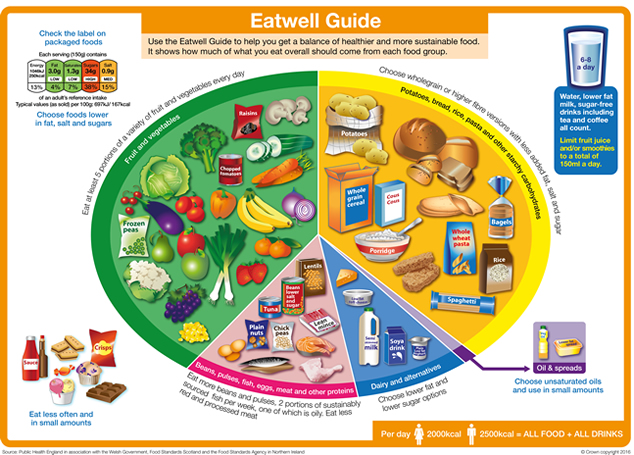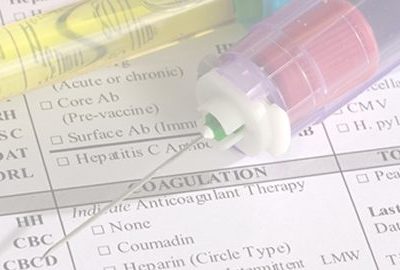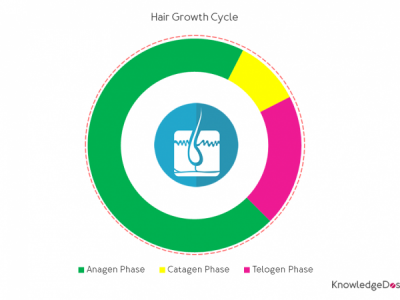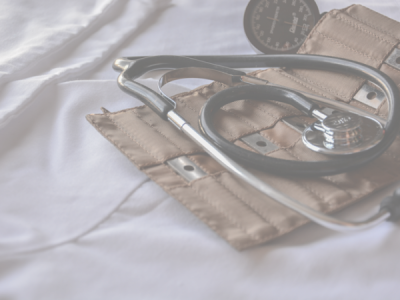The pharmacy can be an ideal setting for promoting healthy eating to your patients and customers. We have put together a general summary on healthy eating and some of the counselling points you may want to consider when promoting healthy eating.
Fruit / Vegetables:
- Eat a variety of fruit and vegetables.
- Aim to eat at least 5 portions of fruit and vegetables per day which includes fresh, frozen, canned, juiced and dried.
- An adult portion of fresh, frozen or canned fruit or vegetables is 80g.
- An adult portion of dried fruit is 30g.
- An adult portion of juice is 150mL.
- Here are some examples of a portion:
- One medium-sized fruit such as a banana, apple, pear or orange.
- Small-sized fruit such as two kiwi fruit or two plums.
- One heaped tablespoon of dried fruit.
- Three heaped tablespoons of vegetables such as peas or sweetcorn.
- Three heaped tablespoons of pulses and beans such as kidney beans or baked beans.
Alcohol:
- For both men and women: Do not drink more than 14 units of alcohol per week on a regular basis.
- Spread your drinking evenly over 3 or more days if you regularly drink as much as 14 units of alcohol per week.
- Use the following calculation to work out how many units of alcohol there are in a drink: Alcohol by Volume (%) x Volume (mL) of Drink ÷ 1,000 = No of Units.
Saturated fat:
- No more than 20g of saturated fat per day for women. No more than 30 grams of saturated fat per day for men.
- Avoid trans fats.
- Reduce saturated fats. Choose monounsaturated and polyunsaturated fats over saturated fats.
- Monounsaturated fats (e.g. olive oil, rapeseed oil, almonds, avocadoes) can help lower the amount of LDL cholesterol which can reduce your risk of heart disease and stroke.
- Aim to eat two portions of fish a week, one of which should be an oily fish (e.g. salmon, mackerel, sardines, trout, pilchards).
- Oily fish contains a good source of omega-3 fatty acids (a polyunsaturated fat) and can also help lower the amount of LDL cholesterol.
- Other sources of omega-3 fatty acids can be found in nuts and seeds (e.g. walnuts, linseed, flaxseed), rapeseed oil, soybeans.
Sugary Foods:
- A diet high in sugar can lead to health problems such as weight gain, obesity and tooth decay.
- Obesity can increase the risk of type 2 diabetes and heart disease.
- Hidden sugars are found in many foods. Check food labels for added sugars and the amount added.
- No more than 5% of daily calories should come from free sugars (for adults, this is around 30g of free sugars). Free sugars are sugars that are added to foods or drinks. It also includes sugars that are found naturally in honey, syrups and unsweetened fruit and vegetable juices.
Salt:
- No more than 6 grams of salt per day.
- Many everyday foods contain hidden salt. This can be avoided by checking the salt content on food labels.
- To reduce the amount of salt used in cooking, use herbs and spices to add flavour.
Fibre:
- Good sources of fibre are found in plant foods such as oats, fruits and whole grains.
- There are two types of fibre which are soluble and insoluble. Soluble fibre (e.g. oats) can be digested by the body. Insoluble fibre (e.g. wheat bran) cannot be digested by the body.
- Increase fluid intake when increasing fibre intake.
- The government recommendation is increasing fibre intake to 30g per day.
- A diet high in fibre can help reduce the risk of constipation, bowel cancer and cardiovascular disease.
A Healthy, Balanced Diet and the Eatwell Guide
- The Eatwell Guide is a visual guide (see figure 1) describing the government’s advice on eating a healthy, balanced diet.
- The Eatwell Guide is based on the five main food groups and shows the proportion of foods to be eaten from each group.
- Fruit and vegetables: 40%
- Potatoes, bread, rice, pasta and other starchy carbohydrates: 38%
- Beans pulses, fish, eggs, meat and other proteins: 12%
- Dairy and alternatives: 8%
- Oils and spreads: 1%
Figure 1. Click image to view full size
- Aim to eat a variety of different foods from each of the food groups to ensure you are getting a wide range of nutrients.
- Aim to drink 6-8 glasses of fluid per day. Water, lower fat milk and sugar-free drinks including tea and coffee all count.
The counselling points listed above are aimed at adults. Please note it does not take into account advice for those that have special dietary requirements or a medical condition where dietary guidelines can vary e.g. kidney disease.
Pharmacists and their teams can play an important role in providing advice on eating a healthy balanced diet in their interactions with patients and customers, especially with the ever-increasing range of fad diets regularly promoted in the media.
References
1. NHS. Eat Well. Available at: https://www.nhs.uk/live-well/eat-well/ [Accessed on 04/04/2019].
2. Public Health England. The Eatwell Guide: How to Use in Promotional Material. Available at: https://www.gov.uk/government/publications/the-eatwell-guide/the-eatwell-guide-how-to-use-in-promotional-material [Accessed on 04/04/2019].





